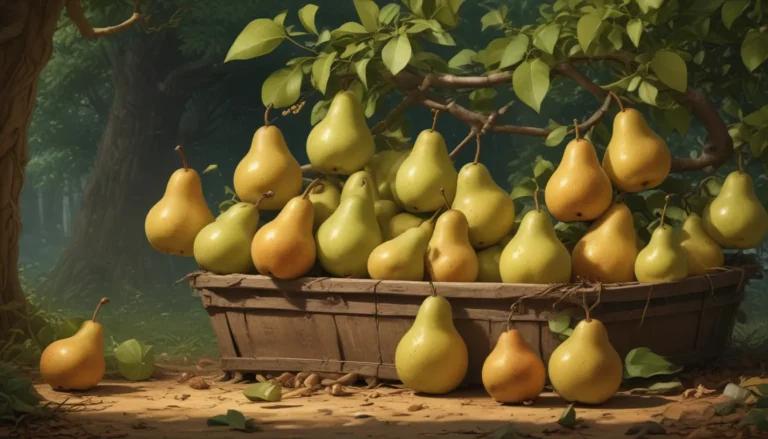Harvesting and Enjoying Pomegranates: A Comprehensive Guide

Are you looking to learn how and when to harvest your delicious pomegranates? If so, you’ve come to the right place! Pomegranate trees, Punica granatum, thrive in hot, dry climates typically found in USDA Hardiness Zones 7-11. These lovely fruit trees produce ripe, juicy pomegranates after a period of five to seven months, depending on the variety you’re growing. In this definitive guide, we’ll explore the ins and outs of harvesting these delectable fruits from your very own backyard.
What You’ll Learn
- How to Tell When Pomegranates Are Ripe
- Harvesting Techniques
- Proper Storage Methods
How to Tell When Pomegranates Are Ripe
When it comes to ripening pomegranates, patience is key. Typically, pomegranate trees yield a bountiful harvest two to three years after planting. These trees flower from midspring to fall, and fruits set around March or April are usually ready for harvest between August and October, depending on the specific variety you’re cultivating.
Since pomegranate plants bloom in cycles throughout the spring and summer, it’s essential to monitor your trees regularly during harvest season. Keep an eye out for these visual cues to determine if your fruits are ready for picking:
- Shape of the pericarp: Ripe pomegranates will adopt a boxier, flat-sided appearance.
- Texture and color of the skin: The fruit’s skin will become smoother and more leathery as it ripens.
- Weight of the fruit: Mature pomegranates will feel heavy for their size and produce a dull, slightly hollow thud when tapped.
Additionally, pay attention to the color of the skin. For instance, yellow or pink varieties may transition from green to their final mature color, while red varieties may deepen from pink to a richer red hue. Avoid harvesting fruits with pale, yellow, or greenish stem ends, as these may not be fully ripe.
Harvesting
Before embarking on your harvest, don a sturdy pair of gardening gloves to protect your hands from the tree’s sharp thorns. Instead of pulling the fruits off the branches, use a clean pair of garden shears to snip the stems close to the fruit. This method helps prevent damage that could make your plant susceptible to disease or decay.
Once you’ve harvested your pomegranates, handle them with care. Place each fruit gently in a basket or bucket to prevent bruising. Discard any fruits that have been split or damaged, as they may harbor harmful pathogens. If you’ve used pesticides on your trees, consider washing the fruits before storing them to remove any residue.
Tips for Harvesting Pomegranates:
- Use sharp garden shears to avoid damaging the plant.
- Handle fruits with care to prevent bruising.
- Dispose of split or damaged fruits to limit the spread of disease.
Storage
To keep your pomegranates fresh, store them at temperatures between 32 and 40°F. When stored properly, these fruits can remain fresh for two to three months. If you prefer to enjoy your pomegranates sooner, use them within one to two weeks at room temperature.
If you plan to refrigerate your pomegranates, consider removing the arils and refrigerating them separately. This method will help extend their shelf life to approximately five days. Alternatively, freeze the arils by spreading them on a baking tray and transferring them to a sealed storage container once frozen. Frozen pomegranate arils can last up to a year in the freezer.
Conclusion
Harvesting pomegranates is a rewarding experience that requires patience and care. By following our comprehensive guide, you can ensure that your fruits are ripe, flavorful, and ready to enjoy. Whether you prefer to eat them fresh, blend them into smoothies, or incorporate them into your favorite recipes, harvested pomegranates are a delicious and nutritious treat.
How do you like to prepare your pomegranates? Share your favorite recipes and tips in the comments below! For more information on growing and harvesting pomegranates, be sure to check out our additional guides on identifying pests and diseases, seed propagation, and fertilization techniques.
Remember, the key to a successful pomegranate harvest lies in patience, care, and attention to detail. Happy harvesting!





